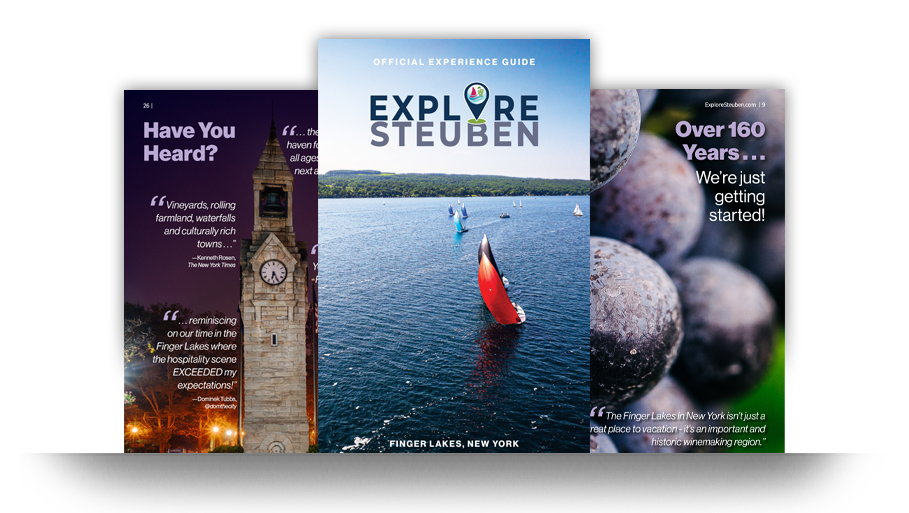Dance with Glass
Imagine wrangling molten lava at the end of a four-foot metal pipe. On purpose!
Yeah, there’s an element of danger when it comes to glassblowing. But that risk is the price you’re willing to pay for the incredible feeling that comes from creating something spectacular from an amorphous gob of blazing goo.
After all, glass artists start by gathering that fiery melted glass (the furnace which gathers are drawn from are kept at over 2,100° F) at the end of their blowpipe and it resembles a glowing orangey honey-like goop. Drop a piece of paper on that gather (that’s the official term, by the way) and it’ll burn away quickly.
The phrase “hot stuff” doesn’t quite cover it.
Did you know that glass is a paradox of sorts for technically it is neither a liquid nor a solid, but a state somewhere in between?
That’s part of the mystery of glass and the magic.
One of the biggest challenges and, potential rewards, for a glass artist is learning how to deftly handle the lava-like substance, to guide it toward the desired shape, and also control as much as one can the ever-cooling, quickly-hardening material that tries, the entire time you work with it, to become more and more solid.
The moment the gather is out of the furnace it starts cooling. That’s why you’ll see that continuous movement of the glassblower back and forth from furnace to workspace.
A gentle puff of air sent the length of the blowpipe and the gather expands ever so slightly into a bubble. Back into the furnace and out again, always moving, rolling the pipe, swaying it (for gravity, you see, is one of the gaffer’s best tools and biggest obstacles).
Working with glass is in many ways like an intimate dance between artist and a temperamental material ready to melt you to the bone (okay, so glass doesn’t actually set out to burn you, but you know what we mean).
The artist has to be able to lead, but also follow at times, to not merely try to force the material to her will, but work with it and sense which direction the two must move in so as to achieve the desired results.
“Even though it is only a thirty-minute process, it’s one of choreography, intensity and a soft touch.” – Samantha Brown, Places to Love
Spend some time in America’s Crystal City and you’ll discover just how remarkable something as ordinary as glass can truly be.
Explore the world’s premiere museum of glass. Studios where artists create work right before your eyes. Others where you can make your own glass keepsake. That’s right, get ready to be blown away. Don’t worry, we’ve made it safe. Kids as young as two years old can blow glass.
“I had no idea that glass was such an interesting part of our human history, art and science. This museum puts the function of glass into perspective with exhibitions, galleries, historic interactive workshops, demonstrations, ancient collections, a wing explaining the impactful industrial uses of glass (past/present), and a large gift shop featuring glass from local New York artists. This is arguably one of the best museums in the country featuring such an interesting medium and so underrated!” — Dominican Abroad
Dance with Glass
Imagine wrangling molten lava at the end of a four-foot metal pipe. On purpose!
Yeah, there’s an element of danger when it comes to glassblowing. But that risk is the price you’re willing to pay for the incredible feeling that comes from creating something spectacular from an amorphous gob of blazing goo.
After all, glass artists start by gathering that fiery melted glass (the furnace which gathers are drawn from are kept at over 2,100° F) at the end of their blowpipe and it resembles a glowing orangey honey-like goop. Drop a piece of paper on that gather (that’s the official term, by the way) and it’ll burn away quickly.
The phrase “hot stuff” doesn’t quite cover it.
Did you know that glass is a paradox of sorts for technically it is neither a liquid nor a solid, but a state somewhere in between?
That’s part of the mystery of glass and the magic.
One of the biggest challenges and, potential rewards, for a glass artist is learning how to deftly handle the lava-like substance, to guide it toward the desired shape, and also control as much as one can the ever-cooling, quickly-hardening material that tries, the entire time you work with it, to become more and more solid.
The moment the gather is out of the furnace it starts cooling. That’s why you’ll see that continuous movement of the glassblower back and forth from furnace to workspace.
A gentle puff of air sent the length of the blowpipe and the gather expands ever so slightly into a bubble. Back into the furnace and out again, always moving, rolling the pipe, swaying it (for gravity, you see, is one of the gaffer’s best tools and biggest obstacles).
Working with glass is in many ways like an intimate dance between artist and a temperamental material ready to melt you to the bone (okay, so glass doesn’t actually set out to burn you, but you know what we mean).
The artist has to be able to lead, but also follow at times, to not merely try to force the material to her will, but work with it and sense which direction the two must move in so as to achieve the desired results.
“Even though it is only a thirty-minute process, it’s one of choreography, intensity and a soft touch.” – Samantha Brown, Places to Love
Spend some time in America’s Crystal City and you’ll discover just how remarkable something as ordinary as glass can truly be.
Explore the world’s premiere museum of glass. Studios where artists create work right before your eyes. Others where you can make your own glass keepsake. That’s right, get ready to be blown away. Don’t worry, we’ve made it safe. Kids as young as two years old can blow glass.
“I had no idea that glass was such an interesting part of our human history, art and science. This museum puts the function of glass into perspective with exhibitions, galleries, historic interactive workshops, demonstrations, ancient collections, a wing explaining the impactful industrial uses of glass (past/present), and a large gift shop featuring glass from local New York artists. This is arguably one of the best museums in the country featuring such an interesting medium and so underrated!” — Dominican Abroad






